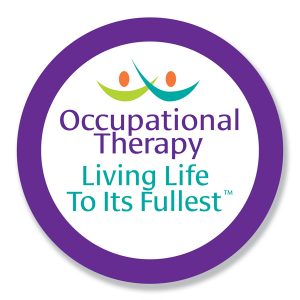The Process
Typically, when you start with an OT there is the Assessment/Evaluation, Goal Setting, and then Creating a Plan.
Occupational Therapy Evaluation
It all starts with an evaluation, where I will collect information on a patient’s health history, health status, and any activities that are currently limited.
As an Occupational Therapist, I have access to an incredible number of standardized OT assessments, many of which are targeted at specific diagnoses. I am trained to assess the following:
- Pain
- Mental Status
- Range of Motion
- Coordination
- Level of Assistance Needs with ADLs
I will then use this information to work with the patient (and/or families or caregivers) to create a plan of care (POC). A POC includes specific goals—both short-term and long-term—as well as the treatment techniques I will employ to help the patient achieve those goals.

Below are some of the diagnoses I currently treat. If you don’t see yours on the list, please don’t hesitate to ask.
Goal Setting
Once the evaluation is done, I will work with you to set goals for your OT treatment. Goals need to be measurable and relate back to the reason for your visit or referral. Your OT will craft long-term and short-term goals.
Here is an example of a short-term goal:
Within two weeks, the client will be able to complete basic grooming while standing for 5-minute increments.
As a client, it is extremely important to know your goals. You should feel comfortable asking for a copy of your goals, as your buy-in to goals will impact the degree to which OT is successful.
Creating a Plan
After setting goals, I will set out a plan for achieving them. At a minimum, the plan will include how often you will benefit from therapy, how long you will benefit from OT services, and what strategies you will use to achieve the stated goals.
Here is an example of a plan:
The client will benefit from skilled OT three times per week for six weeks for therapeutic exercise and ADL training.
User Reviews
Jennifer Nuzzo
a year agoKelly is great! I had an ongoing issue with my shoulder and after a few sessions I felt good as new! Kelly is very intuitive. She always figures out just what my body needs. I wouldn't hesitate to book a session with her. Your body will thank you.
Rating: 5 / 5
Cyndy Landry
2 years agoI have never been to a health and wellness, or doctors office that can make me feel like a completely different person! After being seen by Kelly I can take on my day and week with clarity and pain free. It’s amazing and I highly recommend for everyone, even without pains, to get cranial therapy!
Rating: 5 / 5
Ella Grace
2 years agoKelly is incredible! I have been seeing her for a few years and she is always so kind, super knowledgeable, and wonderfully skilled.
Rating: 5 / 5
Jeffrey Purtell
in the last weekI've been receiving craniosacral therapy from Kelly for the last few months. Her knowledge, compassion and intuition are priceless!
Rating: 5 / 5
Roberta Cordeau
in the last weekI have been seeing Kelly for craniosacral therapy for 6+ months now and it has been life changing for me. Over the years, I have tried so many different methods to try and manage my very sensitive nervous system and so far cranio has been the only practice I have found that helps me regulate and feel better. Kelly also helps me with my physical ailments due to my hypermobility. She is a gifted healer!
Rating: 5 / 5
